19 Epic Things to Do and See on the Snaefellsnes Peninsula in Iceland
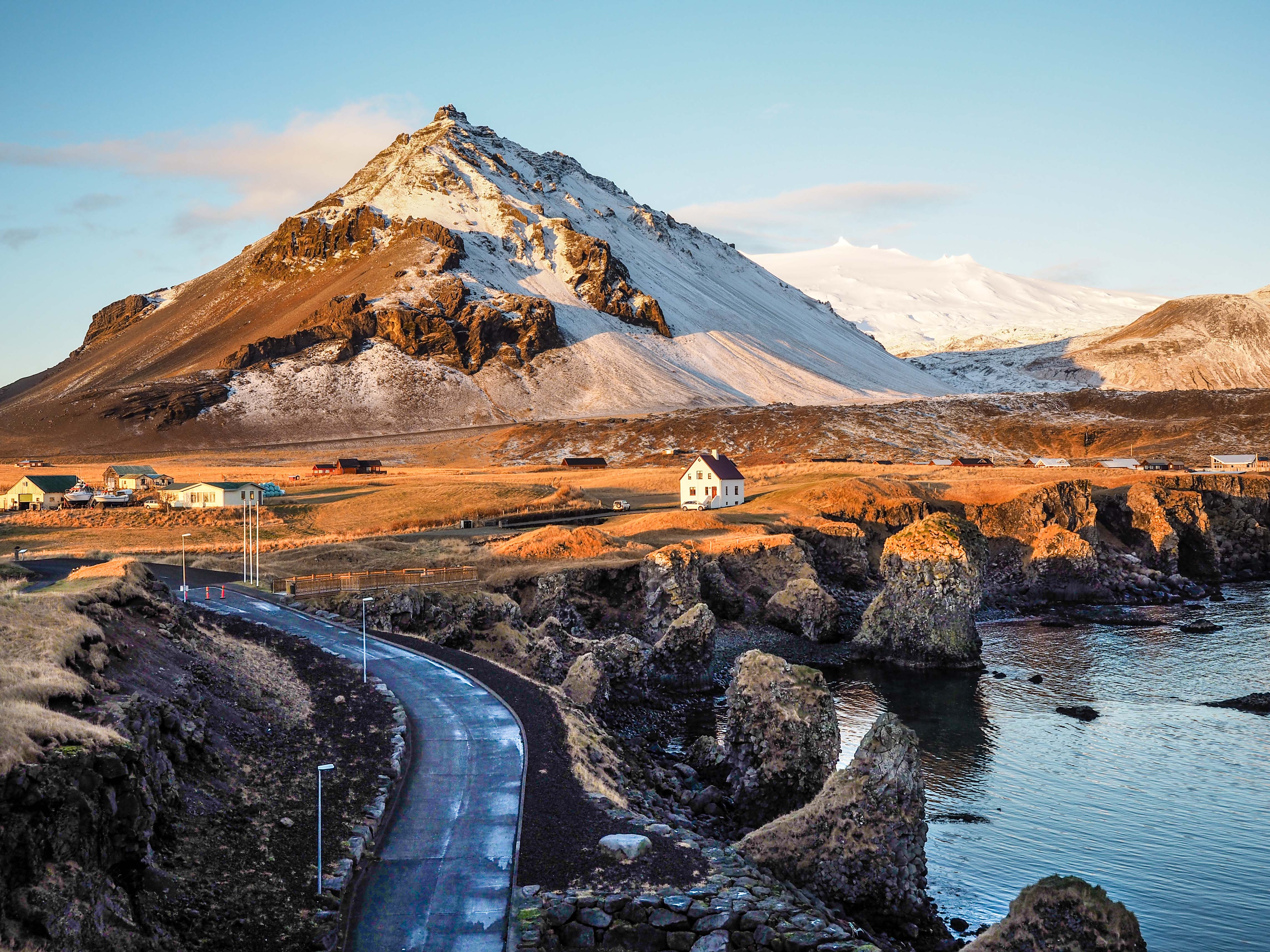
They call it “Iceland in Miniature.”
And it really is. With a crashing coastline, natural hot pools, basalt columns, volcanoes, waterfalls, fluffy horses, and glaciers, the Snaefellsnes Peninsula really does encapsulate just about everything Iceland is known for all within a 90-kilometer-long peninsula.
The peninsula not too far north of Reykjavik also embodies some of the non-visual characteristics of Iceland, too: small, cozy hotels; fresh seafood; an adventurous spirit; and the reminder of just how wild and harsh Mother Nature can sometimes be.
Here on the Snaefellsnes Peninsula you can visit black sand beaches bearing the ghostly remains of shipwrecks, walk along coastlines shaped by the crashing sea, descend into caves formed by molten lava, and hike on a giant glacier that sits atop a dormant volcano.


I've actually been to the Snaefellsnes Peninsula three different times in the last decade – twice in the summer, and once during the winter months. And I can unequivocally say that it's one of my favorite parts of Iceland.
Whether it's your first trip to the Land of Fire and Ice or your fifth, it's worth trying to squeeze in some time to experience “Iceland in Miniature” for yourself. It's definitely an area I would say is a must-visit on any Iceland road trip itinerary!
Top things to do on the Snaefellsnes Peninsula
This list will circle the peninsula going clockwise on Highway 54 (AKA Snæfellsnesvegur), though you certainly could go the other way, too.
1. Gerðuberg basalt columns

One of the first points of interest on the Snaefellsnes Peninsula is the Gerðuberg Cliffs. These hexagonally-shaped basalt columns were formed by rapidly-cooling lava during a volcanic eruption thousands of years ago.
The columns rise anywhere from 23 to 46 feet, forming what almost looks like a wall.
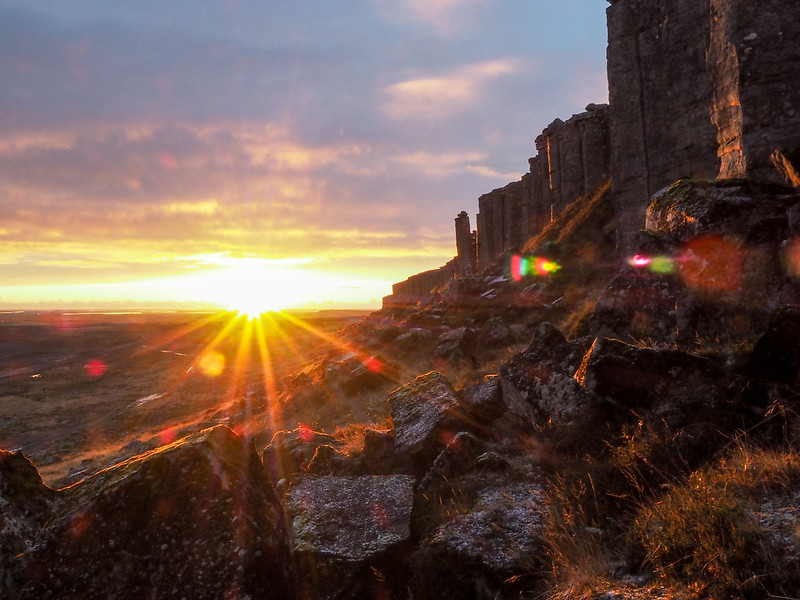
The columns are easy to reach; they're not far off the main road, and there's a designated parking area. You can also climb up to the top of the column wall for some interesting views.
2. Ytri Tunga beach

This beach is unique in that it has golden sand (instead of black). Walking along the beach and rock pools here is nice, and this is one of the best places on the Snaefellsnes Peninsula to see Harbour Seals.
There's a parking lot here and a trail out to a viewing area. Just note that if there are seals on the beach, you should give them plenty of space! They are wild animals, after all.
3. Bjarnarfoss

The first notable waterfall you'll come across on this route around the peninsula is one of the most impressive! It's called Bjarnarfoss, and is a two-tiered waterfall that falls roughly 260 feet from basalt cliffs.
There's a large car park here, and a clearly marked trail that will lead you to a bridge over the lower portion of the falls. You can technically climb higher up, too, but be very careful if you do.

I highly recommend making a stop here! I visited later in the day, and we basically had the whole place to ourselves.
4. Búðakirkja

Within sight of Bjarnarfoss is another spot worth a photo stop: the black church Búðakirkja. No one is quite sure why some Icelanders started painting their churches black, but they sure are striking against the already-striking landscape.
This one sits on the Búðahraun lava field just up the hill from a hotel. (You can drive up the hill to the church, where there's a small parking lot.)
5. Rauðfeldsgjá Gorge


Rauðfeldsgjá Gorge AKA “the Crack” is an interesting little gorge with a stream running through it.
There's a short uphill hike required to get to the mouth of the small canyon, and you'll want waterproof shoes if you want to go beyond the mouth. But I promise it's worth it! Inside, the towering gorge walls are covered in moss.
6. Arnarstapi

The Snaefellsnes Peninsula has no large cities. Instead, there are a bunch of little fishing villages dotted along the coast. One of these worth visiting is Arnarstapi, a popular summer escape for many locals and tourists and traditionally a decent-sized port in Iceland.
Sights in town worth seeing include the harbor, the Stone Bridge, the Gatklettur rock arch, and the Bárður Saga Snæfellsás Statue. Most of these are connected via a well-maintained trail of crushed black lava rock.

In the winter, the town is nearly deserted. But in the summer, it's downright bustling. There are a couple hotels in Arnarstapi, along with a handful of restaurants.
7. Arnarstapi to Hellnar coastal path
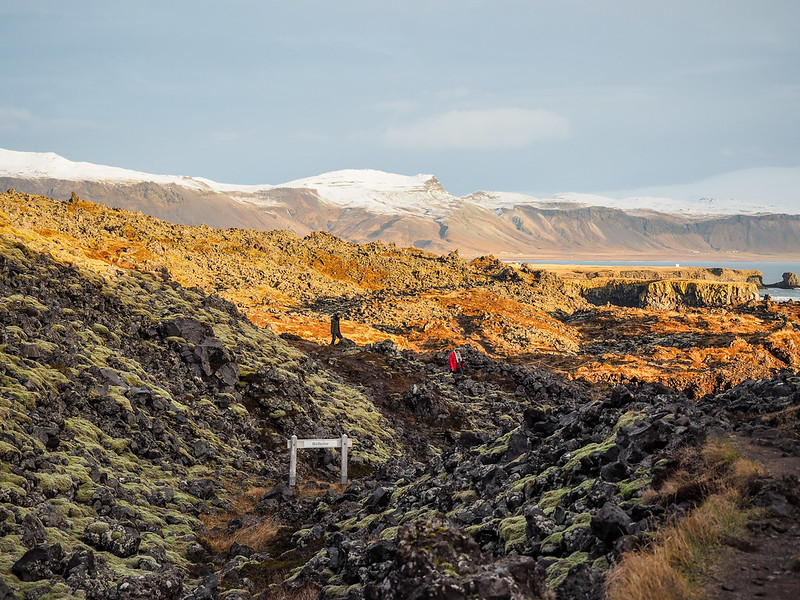
The path that connects the main sites in Arnarstapi actually continues for 1.5 miles along the coast and through the Hellnahraun lava field to another small village called Hellnar.
The hike takes about an hour (you'll want to stop lots for photos!), and is filled with epic views of the coast and a few scrambles over lava rocks.
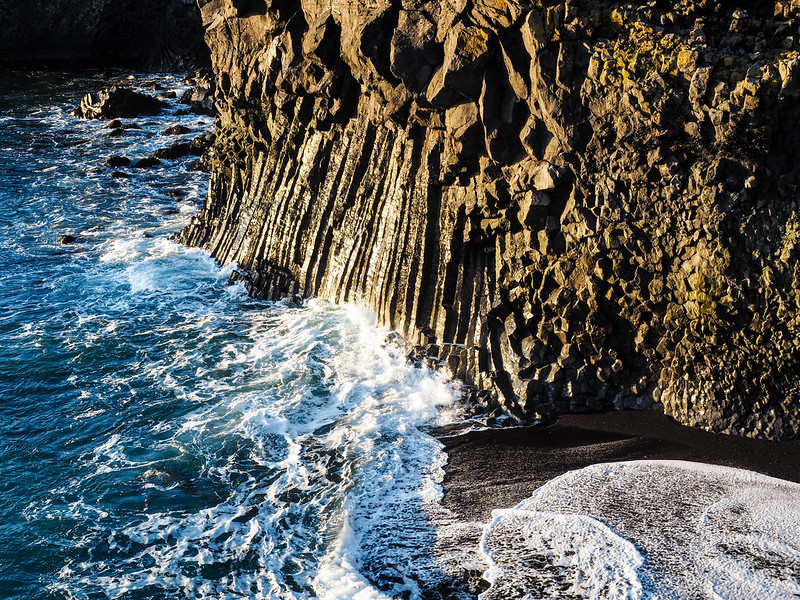
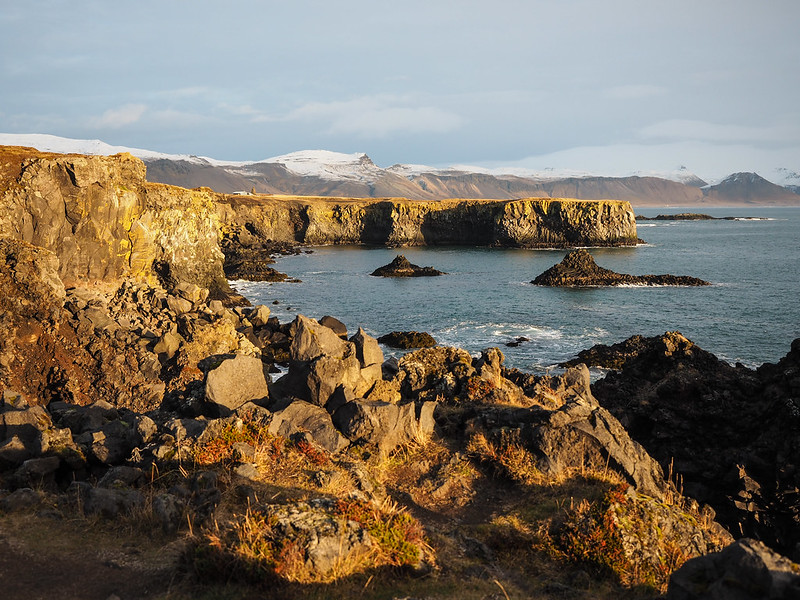
This hike is definitely worth doing if you have time!
8. Hellnar

Even if you don't do the coastal walk, it's worth the slight detour to the village of Hellnar. The views from the Hellnar View Point are worth it (and the Fjöruhúsið café is lovely).
9. Lóndrangar

The cliffs of Lóndrangar rise out of the ocean in a distinctive shape – and the pillars of basalt rock here are actually the remnants of an ancient volcanic crater that have been battered down by the sea.
The Lóndrangar View Point is connected to a parking lot, but you can also see the rock formation from elsewhere in the area.
There's another hiking trail here along the coast between the Lóndrangar View Point and the Gestastofan Visitor Center near the Malarrif Lighthouse. The trail is about a mile one-way, and takes you down to the beach and then up and around the 200+-foot-tall pillars of Lóndrangar.
Parts of this trail also offer up excellent views of the glacier-capped Snæfellsjökull mountain.
10. Snæfellsjökull glacier

Snæfellsjökull is a 700,000-year-old stratovolcano in the center of the Snaefellsnes Peninsula. It's also the name of the glacier that sits on top of the volcano.
You can spot the mountain and get glimpses of the glacier from all over the peninsula (though the glacier is sadly receding rapidly due to climate change). In the summer months, intrepid hikers can even climb the 4700-foot volcano. The hike is challenging and takes most of a day, so you're encouraged to do it as part of a guided hiking tour like this one.
11. Vatnshellir lava cave
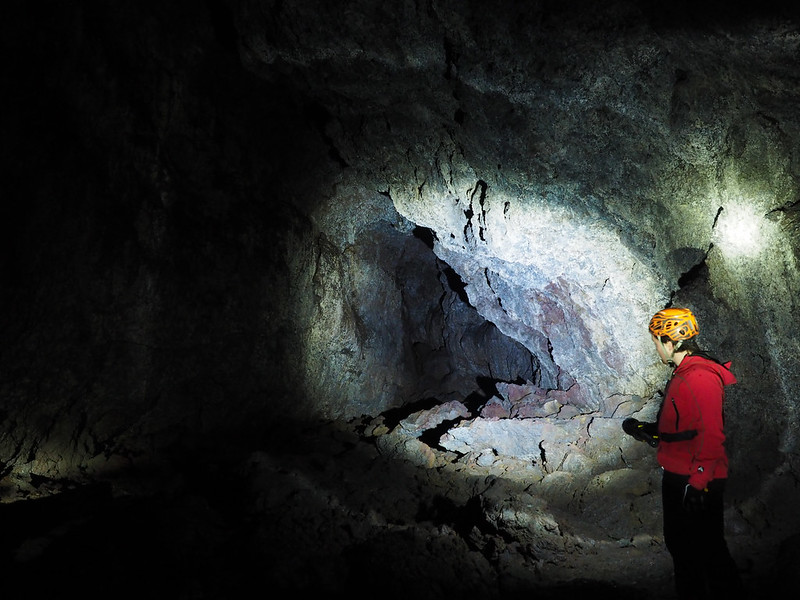
Fun fact: The Snaefellsnes Peninsula is the setting for the beginning of Jules Verne's “A Journey to the Center of the Earth.” In fact, they find the tunnel to the center of the earth beneath Snæfellsjökull.
So if you don't want to climb Snæfellsjökull, you can go under it via the Vatnshellir lava cave.
The Vatnshellir lava cave is popular for a couple of reasons. First of all, it's a cave beneath a glacier that was carved out by molten lava 8,000 years ago. Secondly, it has a lot of legends surrounding it, including being the home of trolls. And, thirdly, the locals say that this is where you'll find the passage to the center of the earth – in fact, there's even a cheeky sign inside pointing the way!
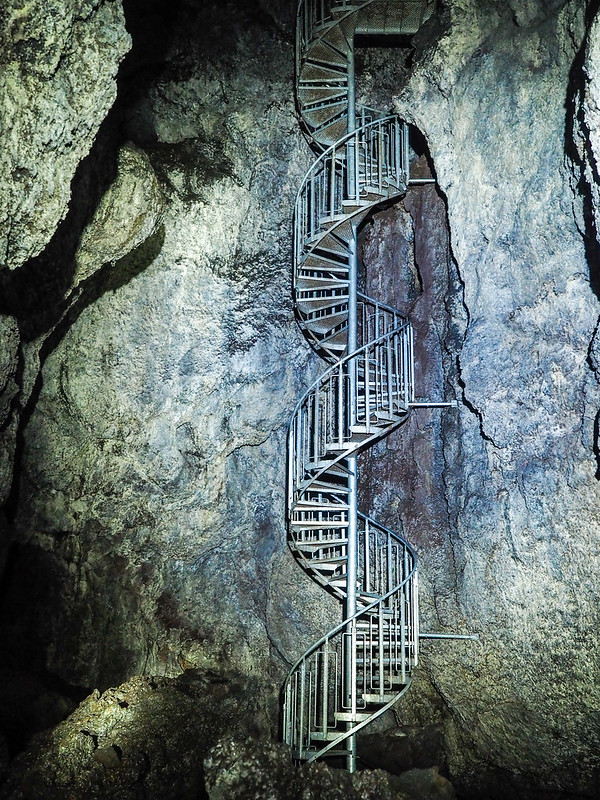
You can only go inside the lava tube cave via a guided tour. Tours last about 45 minutes, and include necessary gear like helmets. Booking ahead is recommended; tours are offered every 30 minutes in the summer, and hourly the rest of the year.
12. Djúpalónssandur beach
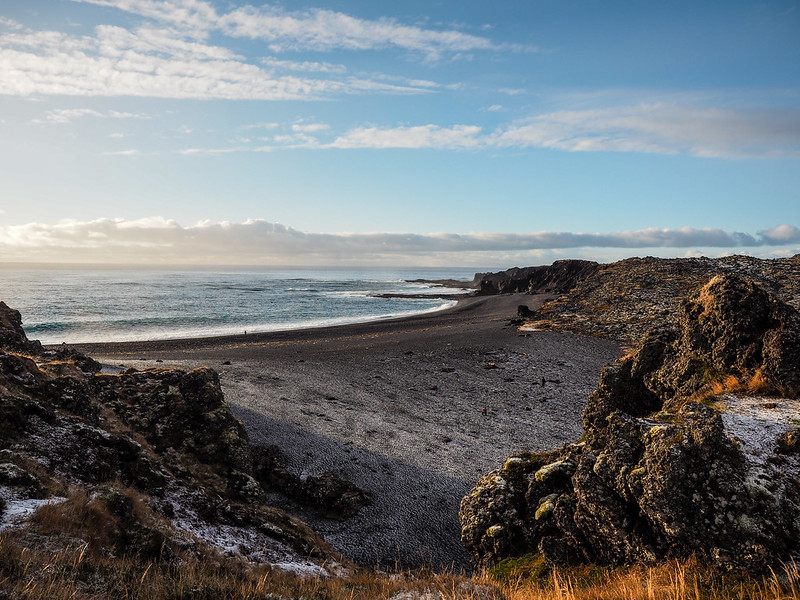
If you want proof of the awesome power of Mother Nature in Iceland, look no further than Djúpalónssandur beach. This black sand/pebble beach at the end of the Snaefellsnes Peninsula is known for wicked waves and currents that have claimed more than one ship throughout history.
There's a view point overlooking the area, as well as a trail leading down to the beach itself. From the parking lot, the walk takes about 10-15 minutes each way and takes you down through the craggy Aflraunasteinar rock formations.

The evidence of shipwrecks can still be seen scattered across the wide swath of black pebbly beach, and the waves breaking on shore are definitely powerful enough to make you think twice about getting too close. (And, seriously, don't get too close.)
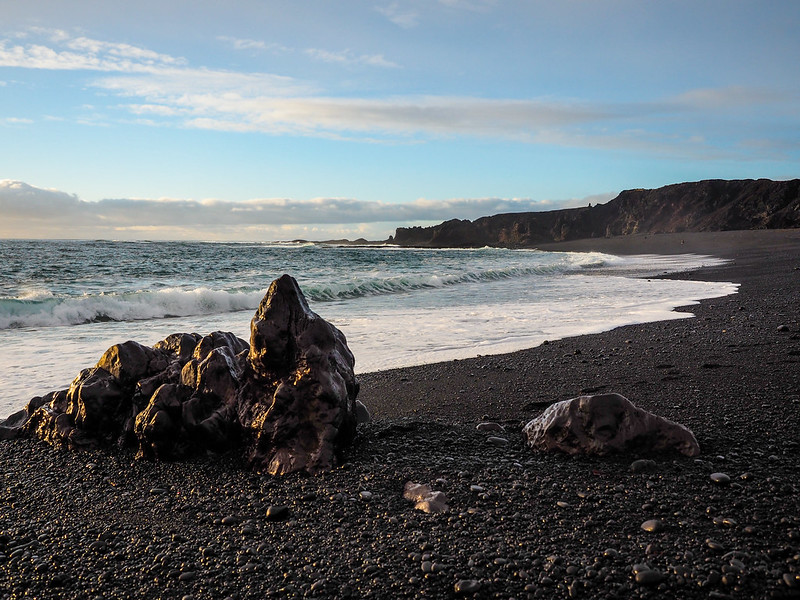
This is one of the busier stops on the Snaefellsnes Peninsula (it is possible for the parking lot to fill up during the summer months with bus tours), but don't skip it! It's worth it to wait to see this very unique beach.
13. Saxhóll Crater

Want to get up close and personal with an extinct volcano? You can do it pretty easily at Saxhóll Crater. Visitors can hike into the 100-foot-tall extinct crater relatively quickly via a set of low-slung steps that curve around its side.
This doesn't take too long, making it a popular stop on the Snaefellsnes Peninsula.
14. Skarðsvík Beach

While black sand beaches get all the love in Iceland, here's another golden sand beach worth visiting. You do have to drive down a one-lane road for a little ways to reach Skarðsvík Beach, but it's definitely worth it (and also fine to do in a 2WD car).
The beach here is a mixture of black and golden sand, surrounded by black volcanic rock and cliffs. It's simply stunning!
There's a small parking area and a couple picnic tables set up here.
15. Ingjaldshólskirkja

Follow signs to Ingjaldshóll to find a charming red-roofed church and an interesting set of stone monuments with stunning views.
The history of Ingjaldshóll goes back centuries – at least back to the 1300s. The church here was once the third-largest church in Iceland, and still serves people in nearby villages.
Outside the church there's a small graveyard, as well as two stone monuments dedicated to Eggert Ólafsson and his wife Ingibjörg Guðmundsdóttir, who grew up in this area and died tragically at sea in 1798. The monuments were made by the sculptor Páll Guðmundsson.
16. Svöðufoss

Another waterfall worth stopping to see is Svöðufoss on the northern side of the Snaefellsnes Peninsula. A short, flat walk from the parking area through farm fields will bring you up close to this lovely waterfall.
Svodufoss doesn't seem to have really been “discovered” yet (despite there being an established parking area and trail), making it a fun one to visit. When I was there, there were only two other couples at the waterfall.

The waterfall cascades 30 feet over a cliff of basalt columns (yes, those are a theme here in Iceland!). On clear days, you can even see Snæfellsjökull rising behind it in the distance.
17. Kirkjufell

Heading along the northern coast of the Snaefellsnes Peninsula, the top attraction by far is Kirkjufell, or the Church Mountain. This is the cone-shaped mountain you've probably seen on all the postcards.
There's a parking lot across the road from the mountain with access a trail that will lead you to the Kirkjufellsfoss waterfalls.

Just note that this is one of the only places on the peninsula where you have to pay to park. The Kirkjufellsfoss parking lot has cameras at the entrance that will take a photo of your license plate, and you pay via a machine before you leave. The amount is based on how long you stay – but you probably only need about 30 minutes here.
18. Bjarnarhöfn Shark Museum

If you only visit one non-natural spot on this list, make it the quirky Shark Museum in Bjarnarhöfn. Here you can listen to a short presentation on how the infamous Hákarl (fermented shark) is made.
Hakarl is the national dish of Iceland, and locals have been eating it for hundreds of years. It's made using the meat of the Greenland shark, which is toxic to humans when fresh. But if it's left to ferment and then hung to dry for a few months, it's safe to eat.
After this process, the meat has a distinct ammonia-rich smell and taste to it. You can try it here at the museum if you dare.

The Shark Museum is located on the farm of one of the last families that produces hakarl commercially to sell all over Iceland. They use sharks that are accidentally caught in fishing nets (shark hunting isn't a thing here any more), and it's fascinating to learn about the process even if you don't want to taste the meat.
19. Stykkishólmur

Lastly, it's worth stopping in Stykkishólmur, the largest town on the Snaefellsnes Peninsula. This town has a lot of charm, as well as a beautiful harbor (which is also where you can catch a ferry to the Westfjords).
Also worth a look is the Stykkishólmskirkja, a modern Lutheran church with a striking design.

How much time do you need on the Snaefellsnes Peninsula?
Ideally you'd allow yourself two days to fully explore the Snaefellsnes Peninsula. With two days, you can stop to see all the beaches, cliffs, and waterfalls, and still have plenty of time for the coastal walks, lava cave tour, and taking your time to enjoy the scenery.
BUT, if you don't have two days, you can see the majority of the highlights here in just one (very jam-packed) day.
Where to stay on the Snaefellsnes Peninsula
Staying overnight on the peninsula is highly recommended! A few hotels and guesthouses to consider include:
- Fosshótel Stykkishólmur
- Grundarfjörður Bed and Breakfast
- Við Hafið Guesthouse/Hostel in Ólafsvík
- Arnarstapi Hotel

Snaefellsnes Peninsula tours
The Snaefellsnes Peninsula is within easy driving distance from Reykjavik (2 hours each way), and the roads are well-maintained in good weather. Therefore you could definitely rent a car and see the peninsula on your own time.
If you don't feel comfortable driving yourself (or if you're going in the winter when the roads might be a bit iffy), there are plenty of tour options, too. You could do an overnight tour, or even a day trip from Reykjavik. (I've done both; obviously the 2-day tour fits more in, but you still see a lot on a day trip!)
- Snaefellsnes Peninsula Full-Day Tour from Reykjavik
- 2-Day Snaefellsnes and Silver Circle Tour (offered year-round)
- 2-Day Northern Lights and Snaefellsnes Peninsula Adventure (winter only)
READ NEXT: 25 Epic Things to Do on Iceland’s South Coast (and What You Can Skip)
Have you ever been to the Snaefellsnes Peninsula? If not, is is somewhere you'd like to visit?
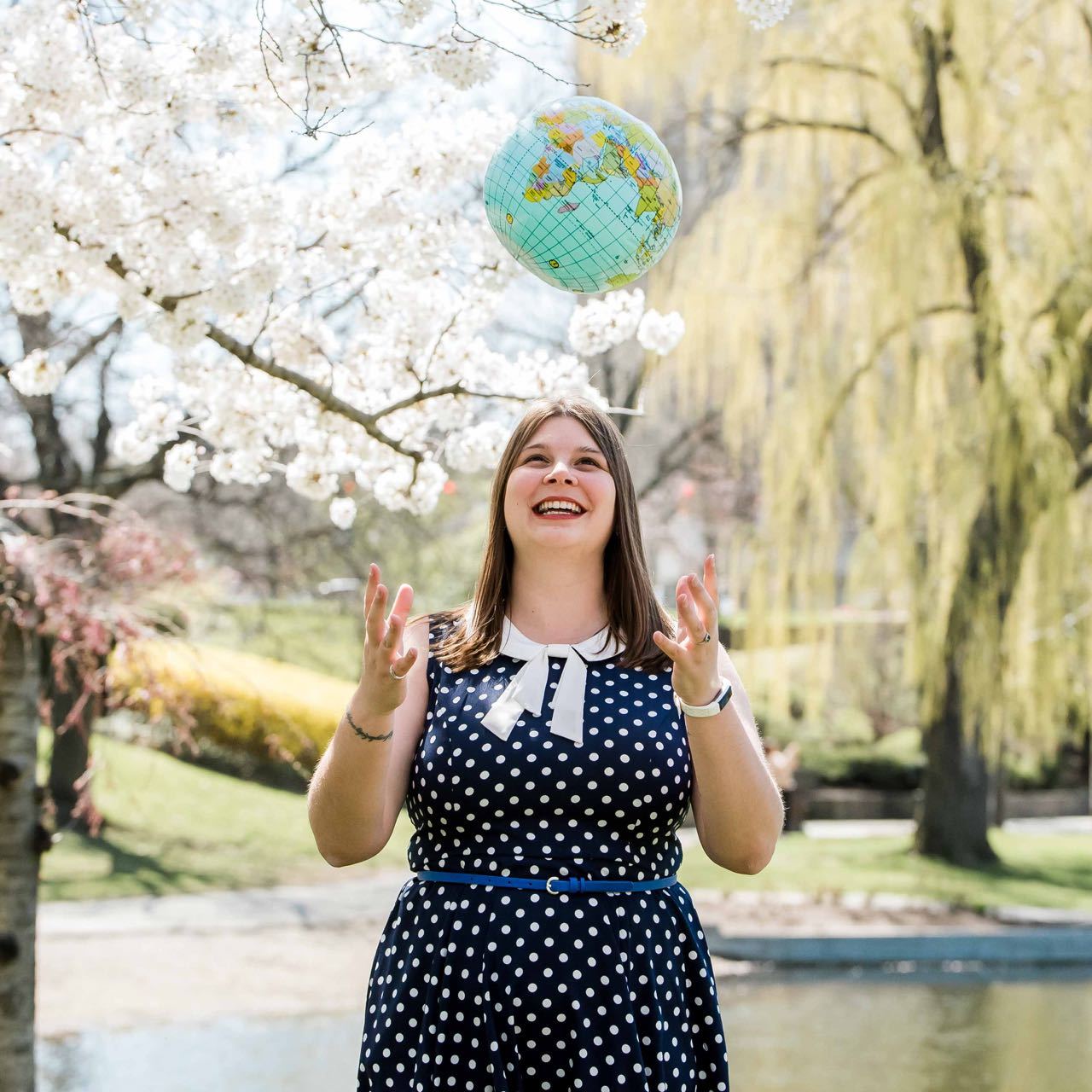
Amanda Williams is the award-winning blogger behind A Dangerous Business Travel Blog. She has traveled to more than 60 countries on 6 continents from her home base in Ohio, specializing in experiential and thoughtful travel through the US, Europe, and rest of the world. Amanda only shares tips based on her personal experiences and places she's actually traveled!

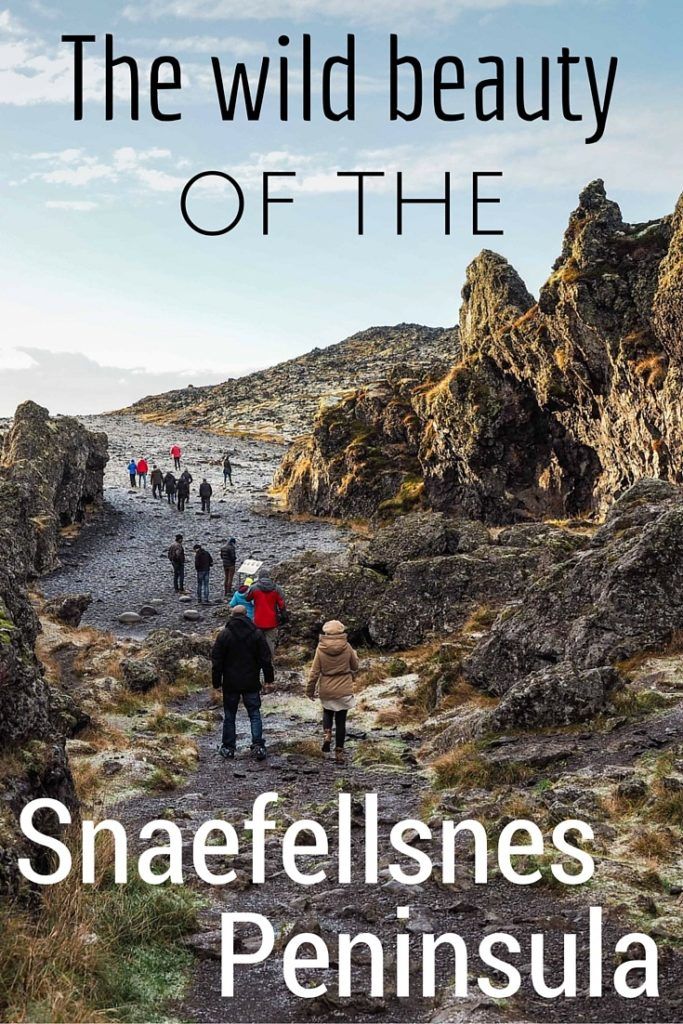









Iceland and the landscapes it offers is amazing
Thank you for the tips!
You have a lot of great ideas on here that I hope to incorporate into a trip this November. If you stay in Reykjavik, but then do a 2-day tour to somewhere like the Snaefellsnes Peninsula, do you just end up paying for 2 hotels for that period of time? Or were you able to book the 2-day trips either at the beginning or end of the trip?
It’s totally up to you. It probably makes the most sense to not pay double for accommodation, but the 2-day trips are fairly good value. We actually did pay “double” during one of them, but it meant we could just pack a small bag for the overnight trip and leave our big luggage in the apartment we had rented, which worked out well for us!
Did your time of visit on December? I’m a bit surprised there’s not much snow covering the Snaefellsnes area. Plan to visit myself some of the points you mentioned and concern that they could not be accessed due to heavy snow such as the Gerduberg Cliffs, Rauðfeldsgjá Gorge, Songhellir Cave and I read somewhere that Vatnshellir lava is not accessible during winter? Could you please help verify that? Thank You
I’ve been to the Snaefellsnes Peninsula twice; once in November and once in August. The photos in this post were all taken in November, so you can see there wasn’t much snow yet that year – but of course every year is different! We visited the lava cave in November, and I’m pretty sure it’s open year-round as long as weather doesn’t close roads in the area.
I just got back 2 days ago… What a beautiful place! I had one full day on the peninsula (2 nights, we stayed in arnarstapi)… We could totally have done more! I’m so bummed I didn’t do the walk between arnarstapi and hellnar…. We had pretty nasty weather plus ran out of time so I only got to see the stapi side. And we didn’t see the northern lights 🙁 I will be back sometime in the summer probably with my hubby in tow! Want to do the whole ring road next time if we can.
That Iceland weather sure can be fickle! But I’m sure you still saw some awesome parts of the peninsula!
I’ll be in Iceland for the first time in the first weekend in April. Snaefellsnes is definitely on my agenda. Thanks for the tips!
Awesome! I hope you love it as much as I did!
[…] Akureyri without a plane and see all that Iceland has to offer. We drove back in the hail rain from Snaefellsness peninsula in the dark, semi’s drove by one after the other, splashing buckets onto the windshield, the […]
indeed, i am guessing that is what i will need to do. i have contacted the hotel we intend to use, but they were of no help. they stated there is an excursion desk at the airport and that they did not have any info on excursions from there. lol. am using this particular hotel because it is walking distance to the airport which has become the most important thing for us. so, to keep searching…also, wow. the prices of these things. some of them are outrageous.
There are a few tour companies that have desks at the airport, but I honestly don’t know if any of them offer tours FROM the airport – most everything leaves from Reykjavik because the airport is kinda in the middle of nowhere! And yes, activities in Iceland can be pricey – it is a Scandinavian country, after all!
will be stopping in iceland in april on our way to copenhagen and a norwegian fjords cruise. i mentioned this before…lol. in any event, with really only a day and a half to explore the area, would you recommend THIS tour over the golden circle to really get a taste of iceland? i am thinking this one is the one for us, though my husband is not fond of hiking and climbing around a lot (he will do it, though….) thanks for the great blog! i am so enjoying it…
The Golden Circle is definitely the bread and butter of Iceland, but I personally preferred the Snaefellsnes tour, simply because you saw such different landscapes. The geysers in the Golden Circle are very cool, but if you’re looking for a slightly more active adventure, I’d say Snaefellsnes! Any Golden Circle tour you do will really just be a series of photo stops.
(Though, it’s worth noting that the tour I did with Extreme Iceland takes a full two days. We left at around 9 a.m. on Day 1, and didn’t return to Reykjavik until about 9 p.m. on Day 2.)
thanks for the advice. in looking at their website, i do not see this particular tour offered. i will drop them an email to see what is available. thanks again. the more i look at the golden circle, the more i thought of just exactly what you were saying…photo stops with lots and lots of other people. i am not wanting to be touring with 3,584,397 others at the same time nor do i want to be doing a large bus group experience. however, travelling with just the two of us, it has been a challenge searching for 1) a tour out of keflavik without having to get to reykjavik and 2) a tour of not more than 20 people. not an easy task so far.
The tour is linked at the bottom of this post, but only runs September-April. It also leaves from Reykjavik. You may indeed have trouble finding tours leaving from Keflavik – have you considered just taking the bus into Reykjavik, and then trying to catch a tour from there?
Your blog totally makes me want to go to Iceland! I’ll have to add it to my list.
It’s certainly list-worthy!
I LOVE this part of Iceland. My mom, sister and I did a two day road trip around the peninsula and we adored it. We stopped in some adorable towns, snowmobiled on a glacier, and even saw some gorgeous art. It was amazing! Great mini taste of Iceland.
I don’t really see how you could visit Snaefellsnes and NOT fall in love with it!
Impressive is understatement. Do you feel you could have invested longer than the 2-day tour and had plenty of outdoor recreation to jump at?
Yes, I think so! There’s plenty to do on the peninsula, and we could have easily spent more time at all the places we stopped.